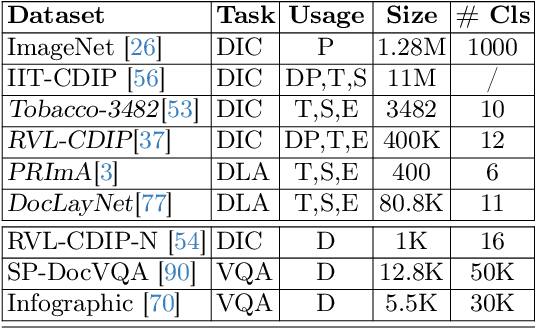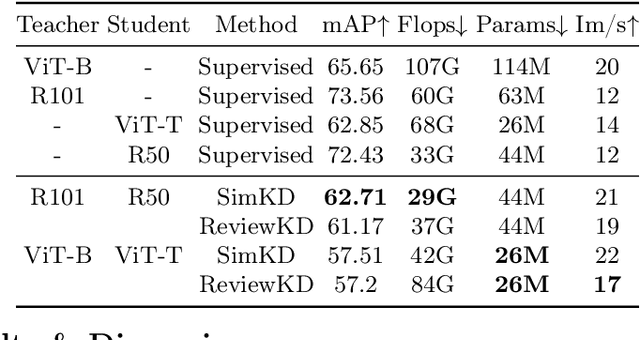DistilDoc: Knowledge Distillation for Visually-Rich Document Applications
Paper and Code
Jun 12, 2024



This work explores knowledge distillation (KD) for visually-rich document (VRD) applications such as document layout analysis (DLA) and document image classification (DIC). While VRD research is dependent on increasingly sophisticated and cumbersome models, the field has neglected to study efficiency via model compression. Here, we design a KD experimentation methodology for more lean, performant models on document understanding (DU) tasks that are integral within larger task pipelines. We carefully selected KD strategies (response-based, feature-based) for distilling knowledge to and from backbones with different architectures (ResNet, ViT, DiT) and capacities (base, small, tiny). We study what affects the teacher-student knowledge gap and find that some methods (tuned vanilla KD, MSE, SimKD with an apt projector) can consistently outperform supervised student training. Furthermore, we design downstream task setups to evaluate covariate shift and the robustness of distilled DLA models on zero-shot layout-aware document visual question answering (DocVQA). DLA-KD experiments result in a large mAP knowledge gap, which unpredictably translates to downstream robustness, accentuating the need to further explore how to efficiently obtain more semantic document layout awareness.
 Add to Chrome
Add to Chrome Add to Firefox
Add to Firefox Add to Edge
Add to Edge